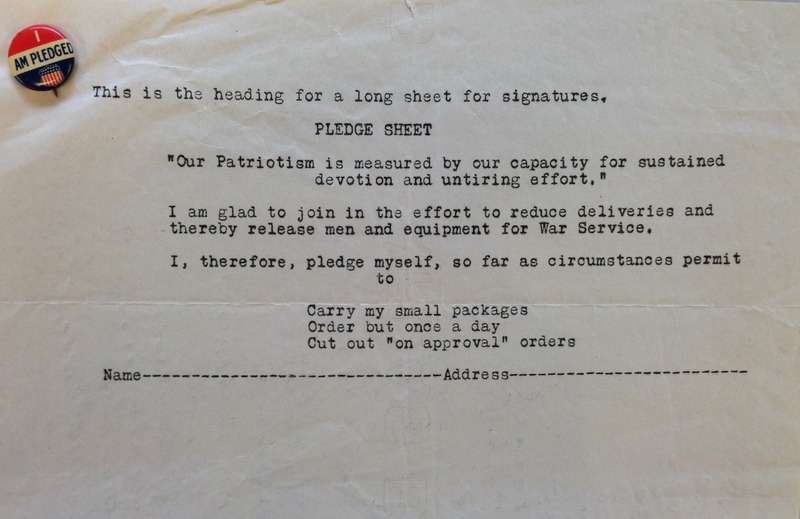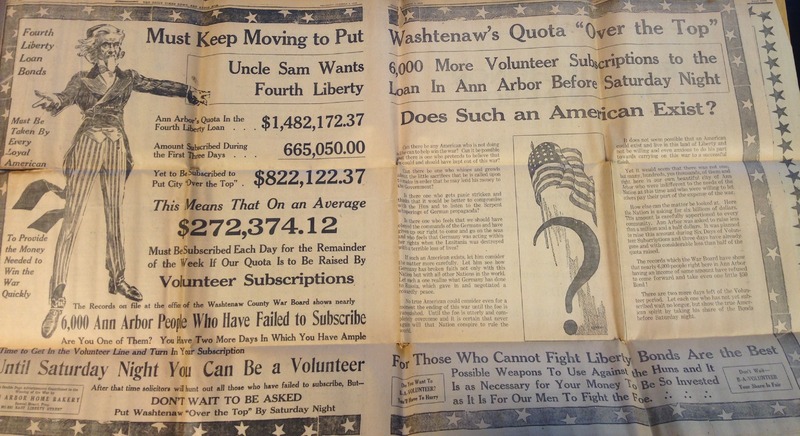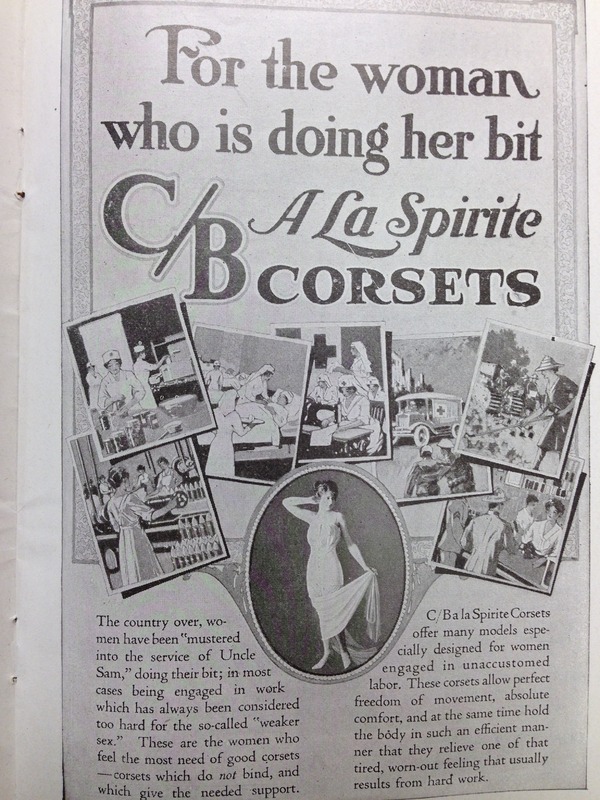The Mobilization of Civilian Life
The patriotic mobilization of the civilian population on the home front during World War I was very effective. Many Ann Arborites had been assisting in humanitarian relief efforts in the town since the war’s beginning. The official entrance of the United States as a belligerent gave their endeavors a new sense of purpose. With the formation of the Women’s Committee on War Preparedness as a branch of the Council of National Defense, the patriotic support of the University and the State was organized into an effective citizen army that provided both for needs on the home front as well as the needs of the soldiers in the war.
Through the sale of Liberty Bonds, the government also raised the funds necessary to wage the war. Through four wartime drives and a fifth in the postwar period, patronage of the Liberty Loans was advertised as a patriotic duty and as a result achieved great success through donations. The University of Michigan had widespread participation in these drives, and despite The Michigan Daily’s frequent derisions of lackluster student involvement, the University always met if not oversubscribed its quota. To increase local food efficiency, the University of Michigan participated in a mass food conservation effort focused on reduction of personal purchases to save resources for the United States army and her Allies overseas. The community adopted many initiatives to achieve their conservation goals, from meatless and wheatless days, the development of public gardens, to personal conservation pledges; each designed to keep Washtenaw County focused on the war effort.
The scope of the Great War’s reach was unprecedented. Militarization efforts, direct military involvement, local fundraising, and resource conservation initiatives allowed civilians to participate in the war in a variety of different ways. The totalizing nature of the war required the participation of the entire population in a way that had never before been necessary, and the actions of the University and state of Michigan can be seen as a microcosm of the nation’s response to the world’s first major modern war.
Please click images for full descriptions and citations



